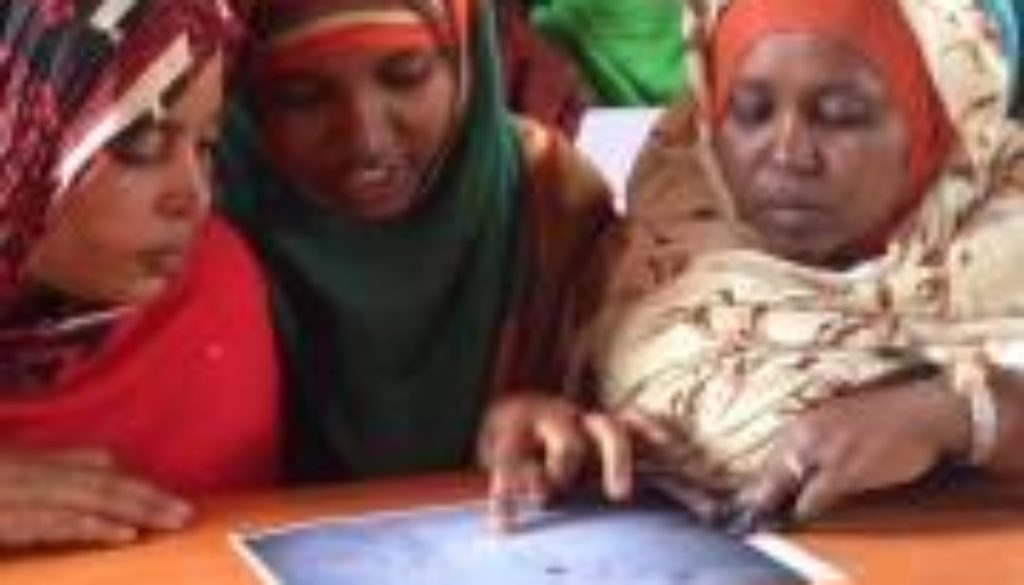Fatima’s story: reflections from a qualitative research dissemination on the drivers of child marriage in Gezira state, Sudan
In this blog post, Rachel Tolhurst and Laura Dean reflect on the drivers of child marriage in Gezira state, Sudan, and how we can bring about change.
Rachel Tolhurst and Laura Dean
Fatima[1] wears a yellow headscarf. She has bright eyes and a hopeful face. She is 17, has already been married for several years, had a child who died in infancy and has been divorced by her husband. She asks us if we are from India as she loves Bollywood films and wants to go to Mumbai. She asks if she can come with us to Europe to be a maid. We wish we could give her the chance to continue her secondary education.

We are in Sudan, disseminating the findings of our qualitative research project exploring the drivers of child marriage in Gezira state. Our research is a collaboration between the Epidemiological Laboratory, Khartoum and Liverpool School of Tropical Medicine and is funded through the Medical Research Council. We hold meetings separately with older women and men, and with adolescent girls in our three rural study villages. We show villagers pictures representing the main themes from our research findings[2] and discuss what they mean with the participants.
Everyone agrees that a ‘good woman’ should be married, have children and ‘look after the house’; there is no other socially acceptable option. For many parents the ideal would be for their daughters to be married in mid-to-late adolescence, but many are married younger. There are many reasons for this. One is the perceived need to protect family honour, which is inextricably linked to the chastity of its women. This means it is vitally important that she does not have any pre-marital relationships, particularly once she ‘becomes a woman’ and the safest way to ensure this is to arrange her marriage.
Another important reason is lack of accessible secondary schooling. Most parents and girls value girls’ education, but once a girl has completed primary school in the village the secondary school is more than ten kilometres away. For most; transport is unaffordable and seen as risky for girls who may be sexually harassed or ‘fall in love’ if away from home. Even if girls complete secondary education, for most, it is not socially acceptable for them to work after marriage, so there are no role models for girls leaving primary school, to widen their horizons and inspire their dreams, and few incentives for their parents to overcome the challenges to continuing their education.
Also, social status and personal stability lie in getting married and having many children to ensure that your husband doesn’t take another wife. Starting young is an advantage here. There is some recognition of the risks of child bearing during the teenage years, but this does not outweigh the social pressures to fulfil the gendered ideal of a wife, which includes a social expectation to have children every two-years. This makes stories similar to Fatima’s an all too common reality, although not all girls survive teenage child birth. We are told the story of one girl who had died from sepsis due to her baby dying in-utero as she was unable to access emergency obstetric care.
How do we bring about change for Fatima and many girls like her?
Our experience in the villages epitomises the dilemmas inherent in many research projects. Despite all our efforts to stress that we are only trying to understand marriage and family norms and have no capacity to provide services, the villagers are hopeful and carefully emphasise their priorities: a secondary school, a health post and running water in the village. In one meeting, a man criticises us because we have been coming and going for a year and ‘brought nothing’; he doesn’t see the point.
In some ways, he is right. It is difficult to envisage changing deeply rooted social customs and relations in a context with such limited support for human and social development. Despite policies that every village should have a midwife and access to a secondary school, only one of our study villages has a resident trained midwife and attending secondary school is prohibitively expensive for most families, for both girls and boys. Villagers are attempting to overcome some challenges through community mobilisation: they collect money to hire teachers and provide furniture and maintenance even for the primary school. But building a secondary school is beyond the scope the vast majority of villages. Nor can community action meet the health needs of young pregnant women in these rural communities: in an obstetric emergency, referral services are simply too far away for many women to have a chance of survival.
Intervening to prevent child marriage in this context requires multi-sectoral action and investment in the provision of alternative futures for girls. It is a huge challenge, and will require profound social change within Sudan. Sudanese women must be at the heart of this, in a collaboration with Sudanese men that ensures sufficient infrastructure for the provision of accessible services. We later meet some of the Sudanese women and men striving to meet these challenges and create change at a meeting in Khartoum.
For the sake of Fatima and thousands of girls like her, it is critical that we give serious consideration to how to support them.
[1] This is a pseudonym.
[2] We developed our research findings through a thematic framework analysis of qualitative data. The main data collected were: in-depth interviews with key informants; focus group discussions with mothers, fathers and married adolescent girls; and child marriage case studies constructed through in-depth interviews with married adolescent girls, their mothers, fathers, husbands, husband’s fathers and mothers. We will publish the full results soon.
Rachel Tolhurst is a Senior Lecturer and Laura Dean is a Research Assistant at the Liverpool School of Tropical Medicine

